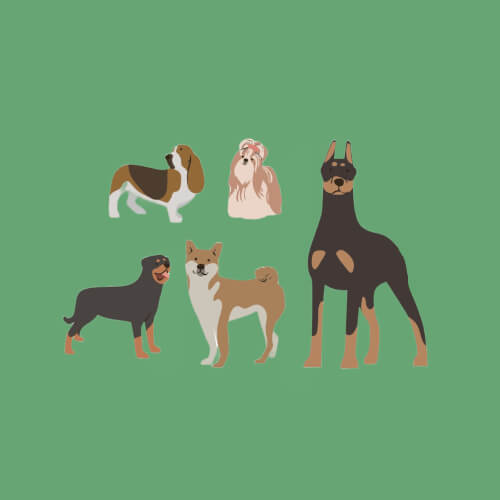


| Taxonomic Rank | Name | Common Name |
|---|---|---|
| Kingdom | Animalia | Animals |
| Phylum | Chordata | Vertebrates |
| Class | Mammalia | Mammals |
| Order | Carnivora | Carnivores |
| Family | Canidae | Dog-like animals |
| Genus | Canis | Dogs, wolves, coyotes, jackals |
| Species | Canis lupus familiaris | Domestic dog |

A dog (Canis lupus familiaris), or domestic dog, is a species of medium-sized, omnivorous mammal. Dogs are the only domesticated member of the family Canidae, the family that also includes wolves, foxes, and coyotes.
Dogs have muscular, athletic bodies; keen senses of smell and hearing; strong, curved teeth; non-retractable claws; and different coat colors and patterns. They are highly adaptable and can live in a variety of environments and climates. Highly social animals, dogs often form strong bonds with humans and other dogs, and are the world's most popular pet, in front of cats.
Dogs are amazing at smelling things. Part of the reason is because they, as well as a few other animals, have a special organ on the roof of their mouth called the vomeronasal organ (VNO) or Jacobson’s organ.
The VNO is like a second nose that connects to the mouth. When dogs sniff something interesting, they lick their nose and curl their lips. This moves some of the smell to the VNO, where it is sensed by special cells. The VNO then tells the brain what it "tasted." The VNO helps dogs to talk to each other and humans, and to find mates, enemies, food, and home.
Archaeologists estimate that the first gray wolves were tamed about 15,000 years ago based on evidence found in fossils and DNA analysis across Eurasia, or the land covering all of Europe and Asia. This is about 3,000 years before humans learned agriculture. Even though we often associate dogs with ancient civilizations, it’s likely that humans didn’t breed dogs for specific purposes until about 10,000 years later.
While the average adult domestic dog typically has a mass of about 15 kg (33 lbs), there have been some truly massive canines recorded in history. In fact, the unofficial title for heaviest dog ever recorded goes to a St. Bernard named Benedictine. Benedictine weighed in at a whopping 167 kg (368 lbs), which is just over 11 times the mass of an average domestic dog.
| Language | Sounds like... |
|---|---|
| English | Woof |
| Estonian | Auh |
| French | Ouaf |
| German | Wau |
| Italian | Bau |
| Language | Sounds Like... |
|---|---|
| Japanese | Wan |
| Korean | Mung |
| Russian | Gav |
| Spanish | Guau |
| Swedish | Voff |
The Fédération Cynologique Internationale (FCI), which is the world’s largest registry of dog pedigrees, or dog breeding history, recognizes 360 different breeds. That being said, the American Kennel Club (AKC) only recognizes 197 breeds and the largest British organization, the Kennel Club (KC), only recognizes 218 different breeds. Lastly, Encyclopedia Britannica claims that only around 200-300 breeds exist.